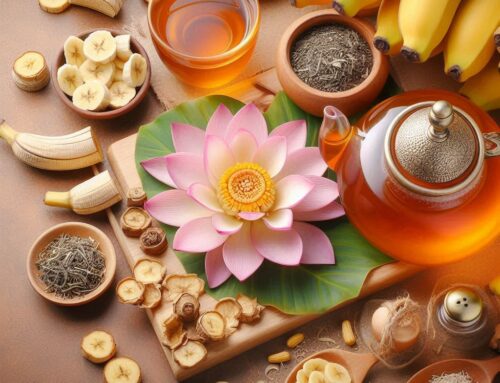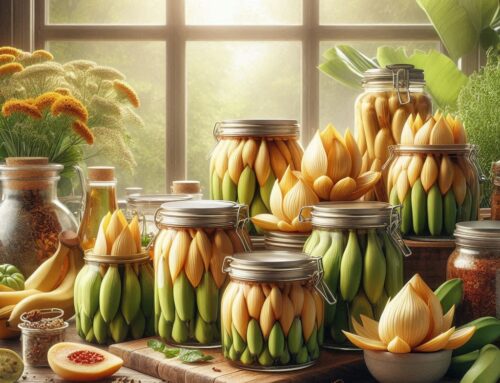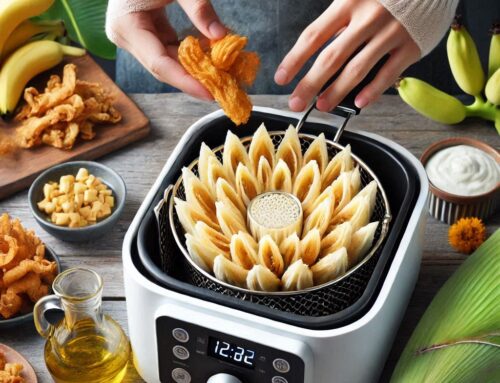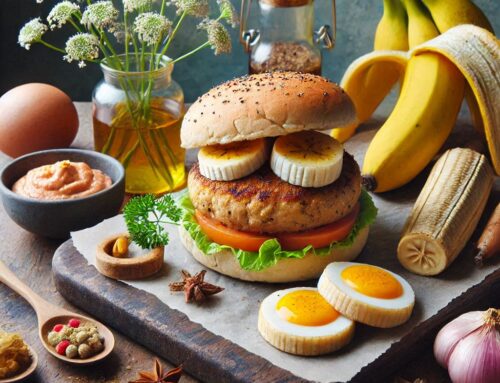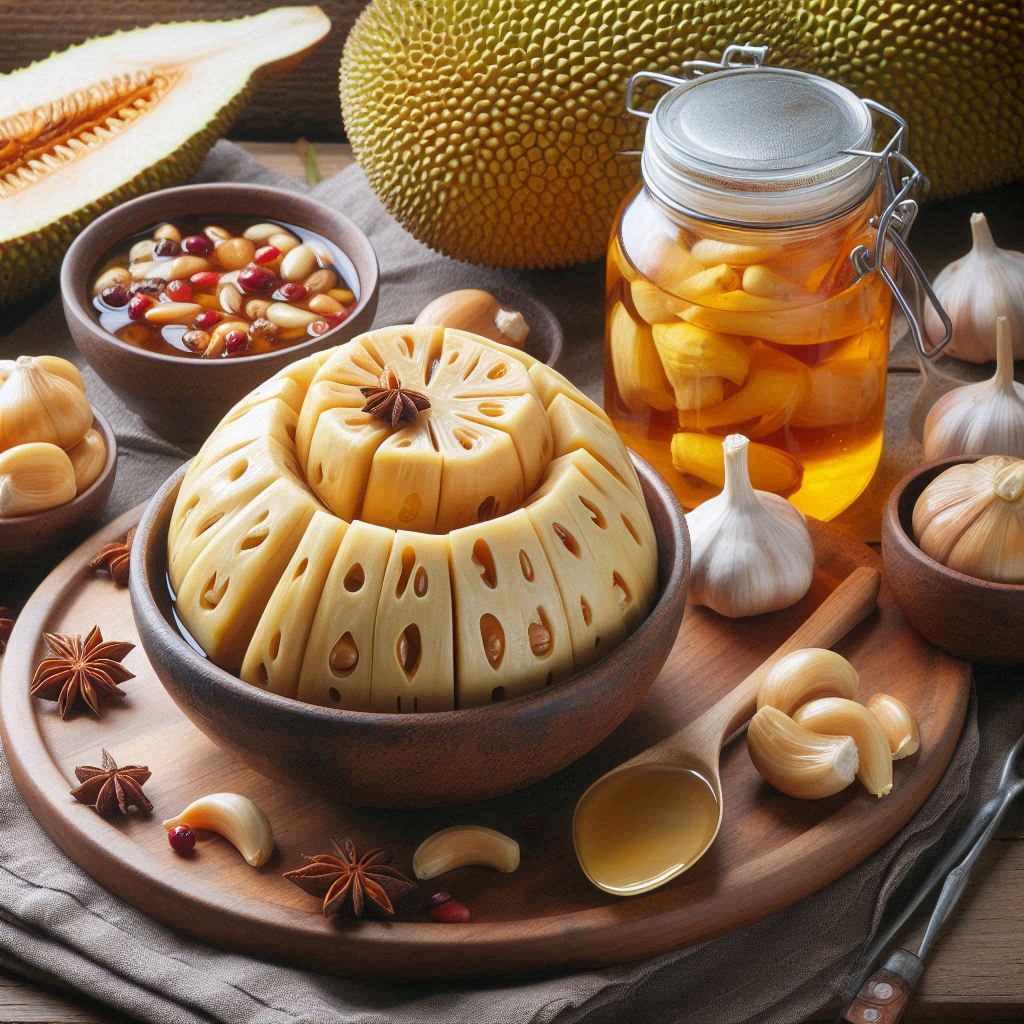
Introduction: Understanding the Shelf Life of Raw Jackfruit
Raw jackfruit, with its unique texture and versatility, is a staple in many tropical cuisines. However, understanding its shelf life and proper storage methods is crucial to fully enjoy this exotic fruit. The shelf life of jackfruit depends significantly on how it is stored and the stage of ripeness when purchased.
When it comes to raw jackfruit storage, keeping the fruit in a cool, dry place can extend its freshness for up to two weeks if uncut. Once cut open, raw jackfruit should be wrapped tightly in plastic wrap or placed in an airtight container and stored in the refrigerator. This method can preserve the fruit for an additional 5-7 days.
For longer preservation, consider freezing the jackfruit. Simply remove the seeds and separate the flesh before placing it into freezer-safe bags or containers. This method allows you to enjoy raw jackfruit for several months without significant loss of flavor or texture.
Understanding ripening process also plays a vital role in determining how long your jackfruit will last. As it ripens, jackfruit emits more ethylene gas, which accelerates spoilage if not properly managed. By controlling exposure to air and moisture through appropriate preservation methods, you can maximize both the shelf life of your raw jackfruit and its culinary potential.
Traditional Methods for Preserving Jackfruit in Tropical Climates
Traditional methods for preserving jackfruit in tropical climates have been passed down through generations, offering effective ways to extend the fruit’s shelf life and maintain its nutritional value. One of the most common techniques is sun drying jackfruit. This method involves slicing the fruit into thin pieces and laying them out under direct sunlight for several days. The natural heat from the sun gradually removes moisture, preventing spoilage and allowing the dried jackfruit to be stored for months.
In addition to sun drying, other traditional preservation techniques include fermentation and pickling. Fermentation involves using natural processes to convert sugars in the fruit into acids or alcohols, which act as preservatives. Pickling combines jackfruit with vinegar, salt, or spices, creating a tangy treat that can last for extended periods.
Natural storage methods also play a crucial role in tropical fruit preservation. For instance, storing jackfruit in cool, shaded areas helps slow down ripening and decay processes. These time-tested practices not only ensure that communities can enjoy this nutritious fruit year-round but also highlight sustainable approaches to food preservation that align with local environmental conditions.
The Role of Salting and Fermentation in Extending Shelf Life
Salting and fermentation are age-old techniques that have been instrumental in extending the shelf life of various foods, providing a natural and effective means of preservation without relying on refrigeration. These methods not only safeguard food from spoilage but also enhance its nutritional profile and flavor.
Salting techniques for fruits involve drawing out moisture through osmosis, creating an inhospitable environment for bacteria that cause decay. This method is particularly useful in preserving fruits like mangoes, lemons, and even jackfruit. By reducing water activity within the fruit, salting helps maintain its texture and taste over time.
Fermentation takes this process a step further by utilizing beneficial microorganisms to transform foods chemically. The natural fermentation process involves converting sugars into acids or alcohols, which act as preservatives themselves. Fermented jackfruit recipes are a testament to this technique’s versatility, offering unique flavors while ensuring the fruit remains edible far beyond its typical shelf life.
Both salting and fermentation represent sustainable ways of preserving food without refrigeration, tapping into nature’s own methods to keep our pantries stocked with delicious and nutritious options all year round. Embracing these traditional practices can lead to exciting culinary explorations while promoting food security in an eco-friendly manner.
Using Leaves and Natural Materials to Protect Raw Jackfruit
The use of natural materials like bamboo leaves for storing raw jackfruit is an age-old practice that offers both practicality and sustainability. Bamboo leaves serve as an excellent natural preservative, leveraging their antimicrobial properties to protect the fruit from spoilage. This method not only extends the shelf life of raw jackfruit but also maintains its freshness and flavor.
Wrapping techniques play a crucial role in this preservation process. By carefully wrapping the fruit with bamboo leaves, one can create a protective barrier that minimizes exposure to air and moisture—two key factors that accelerate spoilage. This technique is particularly beneficial in regions where refrigeration may not be readily available, providing a simple yet effective solution for preserving fruits.
In addition to bamboo leaves, other natural materials such as banana leaves or coconut husks can also be employed as wrapping materials. These alternatives offer similar benefits, showcasing nature’s bounty in providing eco-friendly solutions for food storage. Using these methods not only helps in reducing waste but also promotes sustainable practices by embracing traditional techniques passed down through generations.
Embracing these natural preservatives highlights an innovative approach to fruit storage that aligns with environmentally conscious living while ensuring that the nutritional value of jackfruit is retained over time.
Canning and Bottling as an Alternative Preservation Method
Canning and bottling are traditional yet effective methods for preserving fruits, offering a reliable alternative to refrigeration. These techniques allow you to enjoy the flavors of your favorite fruits year-round while ensuring that they retain their nutritional value.
When canning raw fruit at home, the process involves sealing fresh produce in jars and heating them to a temperature that destroys microorganisms. This method not only prevents spoilage but also extends the shelf life of fruits significantly. The key to successful canning is ensuring that jars are sterilized properly and sealed airtight, which prevents contamination and maintains freshness.
Homemade bottling techniques provide another avenue for long-term fruit storage without refrigeration. Bottling often involves placing fruit in a jar with syrup or juice before sealing it tightly. This method is particularly useful for softer fruits like peaches or berries, which might not hold up as well under traditional canning processes.
Both canning and bottling require some initial investment in equipment such as jars, lids, and a large pot or pressure cooker. However, once mastered, these methods offer an economical way to preserve seasonal produce and reduce food waste. Whether you’re looking to save on grocery bills or simply savor your garden’s bounty throughout the year, mastering these preservation techniques can be both rewarding and practical.
The Impact of Humidity Control on Keeping Jackfruit Fresh Longer
Humidity control plays a crucial role in preserving the freshness of jackfruit, a tropical fruit known for its rich flavor and nutritional benefits. Maintaining the right humidity levels in food storage can significantly extend the shelf life of jackfruit by reducing moisture, which is often a catalyst for spoilage.
In a dry environment, preservation tips focus on balancing moisture levels to prevent both dehydration and excessive dampness that can lead to mold growth. One effective method is using humidity-controlled storage solutions like sealed containers or refrigerators with adjustable settings. These tools help regulate the internal atmosphere, ensuring that jackfruit remains juicy without becoming overly moist.
Reducing moisture for longer freshness involves not only controlling external factors but also understanding how to store jackfruit properly. Wrapping cut pieces in breathable materials like perforated plastic bags can prevent water accumulation while still allowing some air circulation. Additionally, placing absorbent materials such as paper towels inside storage containers can help wick away excess moisture.
By implementing these humidity control strategies in food storage, you can enjoy fresh jackfruit for an extended period while maintaining its taste and texture. This approach not only enhances the fruit’s longevity but also minimizes waste and maximizes your enjoyment of this delicious fruit.
Conclusion: Practical Tips to Keep Your Raw Jackfruit Fresh Without Refrigeration
Keeping raw jackfruit fresh without refrigeration may seem challenging, but with a few practical tips, you can extend its shelf life significantly. First and foremost, it’s essential to select a healthy and ripe jackfruit. Look for one with a firm texture and no visible signs of damage or decay.
Once you’ve selected your jackfruit, store it in a cool, dry place away from direct sunlight. This helps prevent the fruit from ripening too quickly. Hanging the fruit in a mesh bag or placing it on an elevated surface can also improve air circulation around it, reducing the risk of mold growth.
If you need to store cut pieces of jackfruit, consider wrapping them in banana leaves or wax paper to maintain moisture levels while keeping them fresh. Additionally, applying a thin layer of coconut oil on the cut surfaces can act as a natural preservative.
Finally, remember that consuming your raw jackfruit within five to seven days will ensure optimal freshness and flavor. By following these simple yet effective methods, you can enjoy this tropical delight even without refrigeration.


